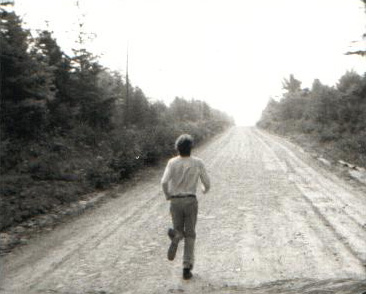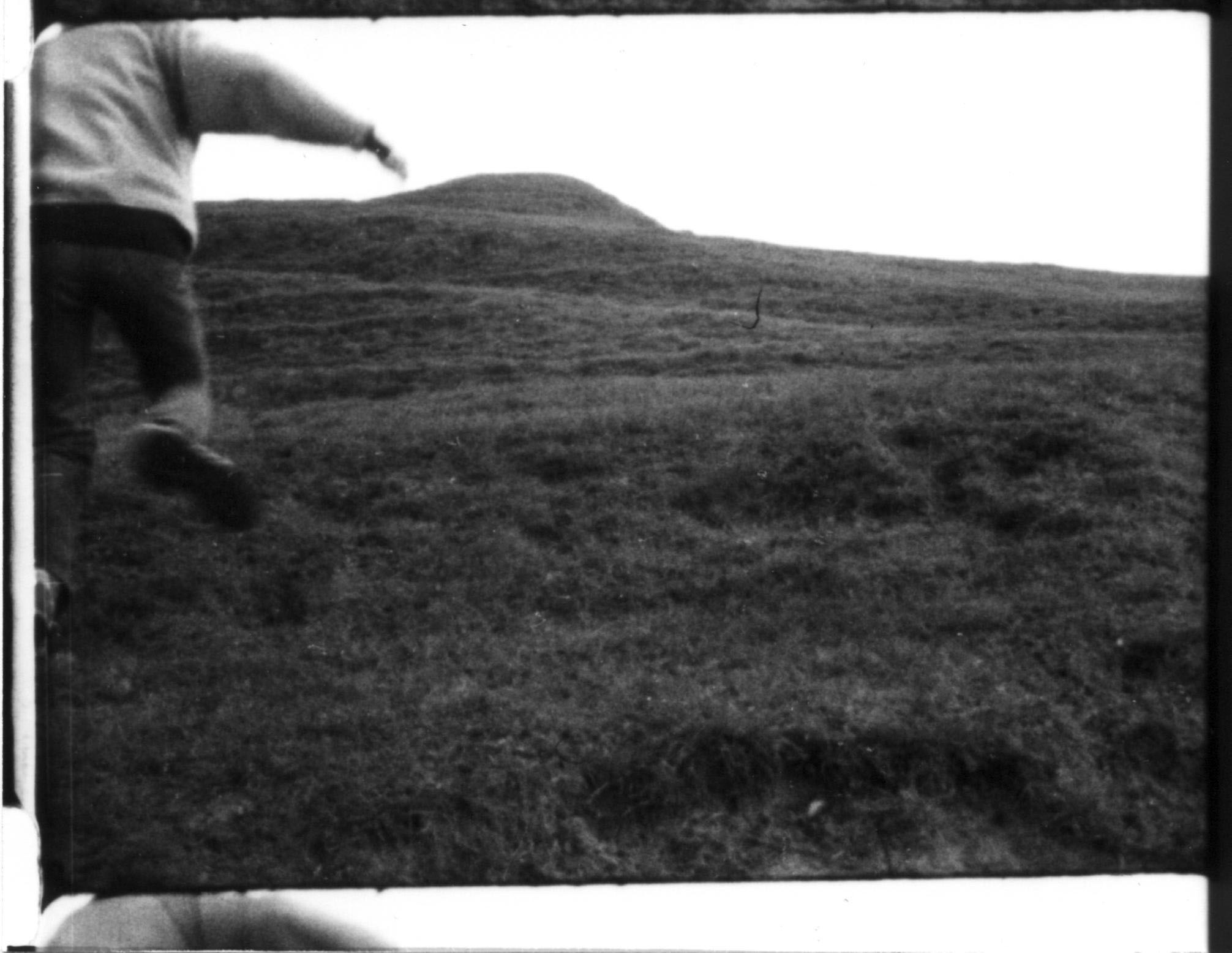
![]()
|
A
Trilogy Different ways of knowing and experiencing the world are elucidated by the images (we see a solitary man running along a road, a couple breakfasting daily before work, a boy running up and rolling down a hill, a place that recalls primordial mysteries) and set out in three texts; a series of statements of historical fact, a story of an initiation rite, and a list of questions. "It deals with basic philosophical issues of memory, knowing and consciousness by juxtaposing different levels of experience: the everyday life in the family kitchen, the mythic and historical context of culture itself, the evolution of perception at different times of life." (Gayle Young, Musicworks) “As a leitmotiv, the progress of a man, running towards his destiny, through the countryside. The rhythm of his gait is in harmony with that of our hearts, and the days which follow one another. Yes, life evolves as an irreversible but repetitive process: the right foot following the left, day after night, death after birth. The running of the man shows us the drama of our world. This is the beginning and the end of the movie, the first movement of a symphony. This theme never really disappears, but returns in various guises. It discovers itself in a succession of morning scenes, sometimes in the form of a young boy rolling down a hill, sometimes even in the duplication of the emptiness into life and death". - Andre de Palma " Sternberg's A Trilogy attempts something [more] ambitious, an actual reversal of the narrative trajectory of the male soul with its crucial moments of separation, violence, and consolidation of the imperious self....A Trilogy [also] plunges into traditional symbolisms like the earth and birth-mother that carry with them archetypal narrative associations...In A Trilogy...the landscape is not silent and other. It is symbolized as primal and natural by association with the sea and the mother's body. In what is Sternberg's major trope in the film, landscape serves a classic, indeed even an archaic, function of signifying the unity and truth of being before separation and historical consciousness...Sternberg seeks to resurrect storytelling in a feminized mode by orchestrating a poetic fold between the self and the landscape....A Trilogy should be taken as a plunge towards the project of a utopian feminity that would reconcile not only gender difference but human spirit and the spitit in the landscape." - Bart Testa, Spirit in the Landscape catalogue, Art Gallery of Ontario
A Trilogy credits: Available from:
Canadian Filmmakers' Distribution Centre
|
|||||
| A Trilogy Transcript | ||||||
| Video Clip | ||||||
| Reviews/Articles: | ||||||
| Catalogue essay for Practices in Isolation by Gary Popovich April 19, 1986 | ||||||
| Notes for an article on Barbara Sternberg's film A Trilogy by Maureen Paxton | ||||||
| Independent Eye, Volume 10#2 Winter 1989 Body and Time: The films of Barbara Sternberg by Vivian Darroch-Lozowski | ||||||
| Panorama: Four Films by Barbara Sternberg by Rae Davis, April 8, 1996 | ||||||
| Northern Exposures 1995 (Catalogue) "Living the Everyday as History": article by Barbara Godard | ||||||
| Inside the
Pleasure Dome: Fringe Film in Canada, Gutter Press ‘97
|
||||||
| Film/Time/Film: Barbara Sternberg and Gayle Young; Musicworks article 45, Winter 1990 |
||||||
| Toronto Festival of Festivals Catalogue | ||||||
| “Like a Dream That Vanishes,” Catalogue, Andre de Palma | ||||||
| A Trilogy from B.Sternberg on Vimeo. | ||||||

